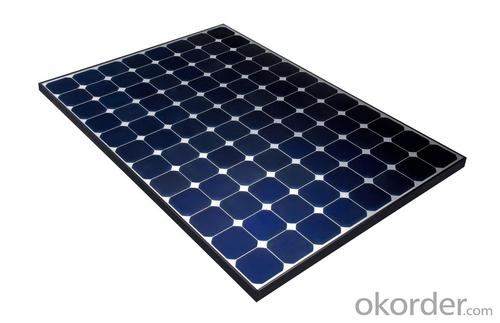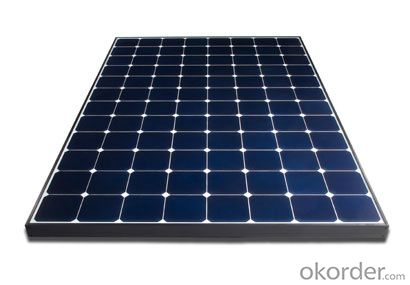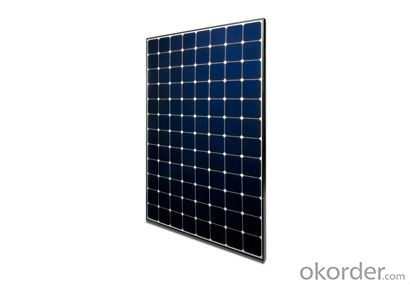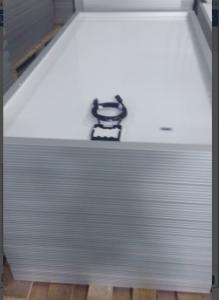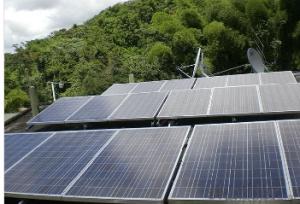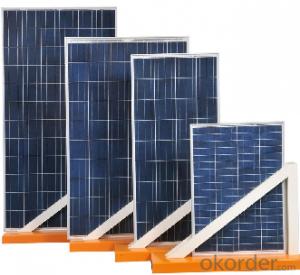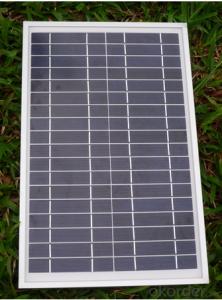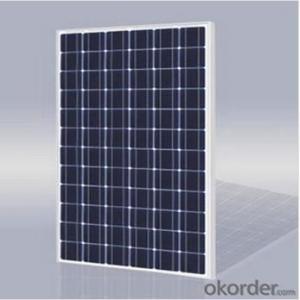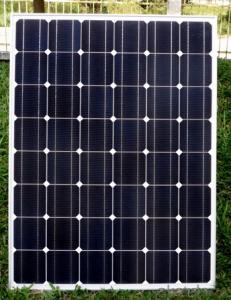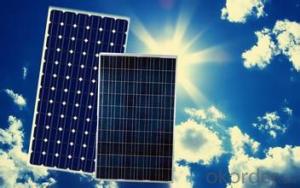75w CNBM Polycrystalline Silicon Solar Panels Anaheim for Home Use
- Loading Port:
- Tianjin
- Payment Terms:
- TT OR LC
- Min Order Qty:
- 100 watt
- Supply Capability:
- 1000 watt/month
OKorder Service Pledge
OKorder Financial Service
You Might Also Like
Specification
75W CNBM Polycrystalline Silicon Panel for Home Using
Production description
Most solar modules are currently produced from crystalline silicon (c-Si) solar cells made of multicrystalline andmonocrystalline silicon. In 2013, crystalline silicon accounted for more than 90 percent of worldwide PV production, while the rest of the overall market is made up of thin-film technologies using cadmium telluride, CIGS and amorphous silicon[7]Emerging, third generation solar technologies use advanced thin-film cells. They produce a relatively high-efficiency conversion for the low cost compared to other solar technologies. Also, high-cost, high-efficiency, and close-packed rectangular multi-junction (MJ) cells are preferably used in solar panels on spacecraft, as they offer the highest ratio of generated power per kilogram lifted into space. MJ-cells are compound semiconductors and made of gallium arsenide (GaAs) and other semiconductor materials. Another emerging PV technology using MJ-cells is concentrator photovoltaics (CPV).
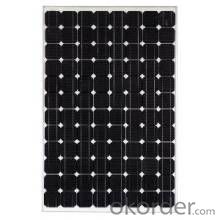
Feature
1.High conversion efficiencies resulting in superior power output performance.
2.Outstanding power output even in low light or high temperature conditions
3.Optimized design for ease of soldering and lamination
4.Long-term stability,reliability and performance
5.Low breakage rate
6.Color uniformaity
Physical characteristic
1. Rigorous quality control meets the highest international standards.
2. High-transmissivity low-iron tempered glass, strong aluminium frame.
3. Using UV-resistant silicon.
4. IS09001/14001/CE/TUV/UL
- Q: Can solar panels be installed on a pergola or shade structure?
- Yes, solar panels can be installed on a pergola or shade structure. In fact, installing solar panels on a pergola or shade structure can provide both shade and renewable energy generation, making it a practical and efficient solution for maximizing space and reducing energy costs.
- Q: Can solar panels be installed on billboards?
- Yes, solar panels can be installed on billboards. In fact, it is becoming increasingly common to see billboards equipped with solar panels to harness solar energy and power their lighting systems. This not only reduces the environmental impact of billboard advertising but also helps in promoting renewable energy usage.
- Q: Can you please tell me how much a solar panel costs?Please back up your info with a website.
- If okorder /.. Low-cost crystalline panel manufacturers such as Suntech are believed to have costs in the $.50/watt range today - making it $300 for a 200-watt panel. That doesn't mean that one can buy a panel for that price, of course. If you mean a DIY panel from purchased solar cells, the cost would be closer to $360 for an equivalent-powered panel, not counting the price of the frame, and the labor. A homebuilt panel would not stand up to decades of weather unless one spent even more on the frame. And since such a panel would not have safety certification, it could not legally be connected to the grid in most places. If you meant a water heating panel, please update or post another question - I'm sure people will chime in.
- Q: What's the best deal going on companies leasing out Solar Panels in California?
- Solar okorder
- Q: Have a 20V 40W solar panel and it is attach to two backup batteries. Just want to know know how many watt of inverter do I need?
- It depends on what you want to run from the panel. A 20W inverter might last a long time, but would not run much. A 00W inverter might run down your batteries in a few hours. It might help if you posted how much capacity (Volts, Amp-Hours) the batteries have.
- Q: How much would it cost (approximately) to convert my home (3 bed. 2 bath) to a green home that is run entirely upon solar panels on my roof? From the panels through installation does anyone know a price break down?
- You will first need to know how much power you'll be using. Follow the link I left and it will take you to a page that has an Electrical Load Computation Worksheet. It's about the fifth one down on the page. After that, you'll be able to figure out what you need and what it will cost. The page link I left has other helpful articles, too.
- Q: I wanna start going green, you know like solar panels, wind turbines, etc. but where I live the companies that install the free solar panels in exchange for the subsidiaries aren't available. To start off I was just looking for a single panel I could drill into my roof and wire it to an outlet just for small thinks like charging my phone and a fan maybe. If anybody can understand my crazy idea please answer with links to where I can find these things. Thanks!
- Build okorder
- Q: I have just made my first dolar panel 20 watts, charges my 27TMX Trojan battery perfectly. Now I am thinking to build more solar panels for a grid tie installation at my house, maybe 5 panels would do it, is this safe?
- Congratulations on your solar panel. It takes a lot of work to construct one. Tying to the electric grid requires permission from your power company, and conformance to local building codes. This generally means compliance with the National Electrical Code (NEC), meaning your panels must be UL (or similar rating from another standard) listed, for fire and electrical safety reasons. Homemade panels won't qualify, unfortunately. I really would discourage you from trying to do a jungle installation without permission, as the power distribution in a house is nothing to be trifled with. That would also likely void your homeowner's insurance, and give the bank a reason to call your mortgage, if you have these.
- Q: How do solar panels affect the aesthetics of a roof?
- Solar panels can have both positive and negative effects on the aesthetics of a roof. On one hand, they can enhance the visual appeal by giving the roof a modern and eco-friendly look. On the other hand, some people may find the appearance of solar panels less attractive or disruptive to the overall design of their roof. Ultimately, the impact on aesthetics largely depends on personal preferences and the design integration of the solar panels into the roof.
- Q: I got an 8v solar panel for a project today, the only problem is that it came without any wires attached to it. Now i don't know what type of wires i should use and if i should solder them on or if i should use epoxy instead. Can anybody help me out?
- You might want to be careful about soldering. Some panels can be easily damaged by excess heat. Check the manufactures website for recommended attachment methods. Solder tape or conductive epoxy might be better. If you do not have such things already, a good idea might be to take it into a TV repair shop or electronic hobbyist store. Some folks are kind enough to do it for you for free.
Send your message to us
75w CNBM Polycrystalline Silicon Solar Panels Anaheim for Home Use
- Loading Port:
- Tianjin
- Payment Terms:
- TT OR LC
- Min Order Qty:
- 100 watt
- Supply Capability:
- 1000 watt/month
OKorder Service Pledge
OKorder Financial Service
Similar products
Hot products
Hot Searches
Related keywords



